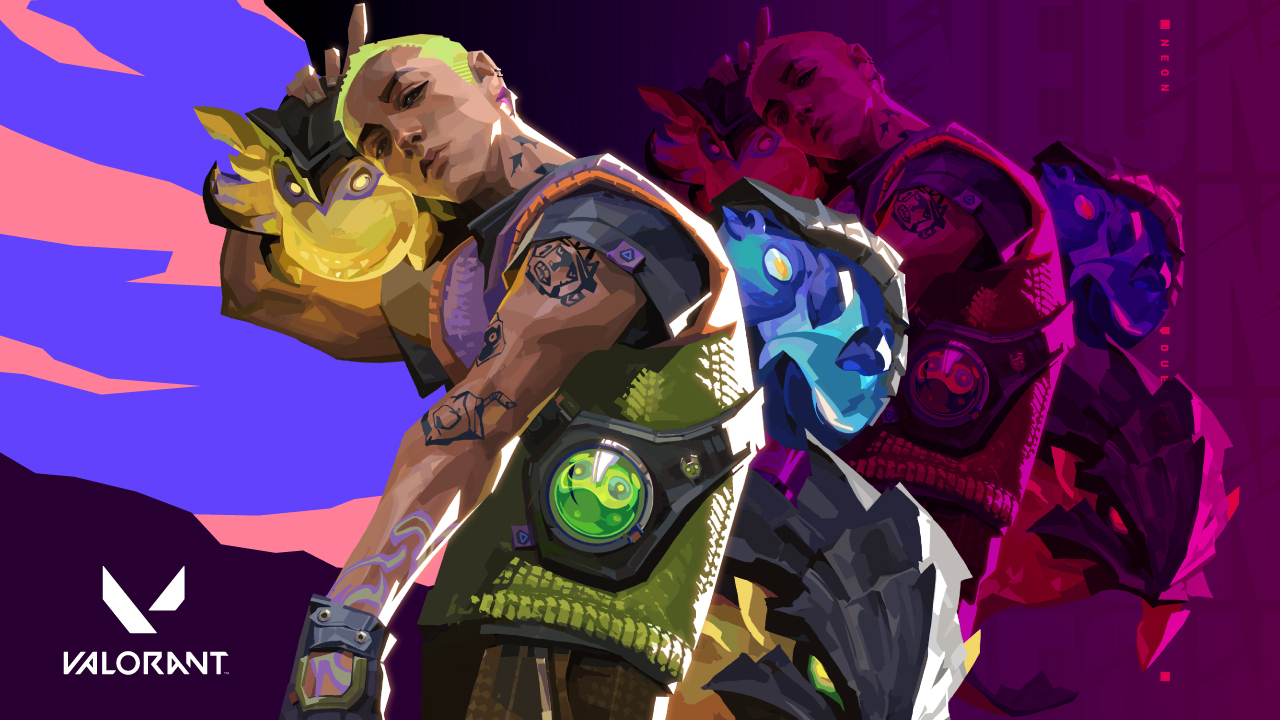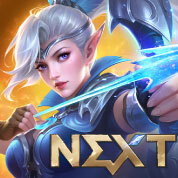 The recent changes to Killjoy in Patch 6.08 has the VALORANT community divided. On the one hand, Killjoy mains have experienced its greatest obstacle yet: exposing their setups before the enemies can even contact the Alarmbot and Nanoswarms. On the other, a collective sigh of relief as the Sentinel role has become more “balanced,” with the four Agents in that role (Killjoy, Sage, Cypher, Chamber) have now seen somewhat of a plateau in pick rate across all maps in all skill levels. Of course, this does not translate in professional (Tier 1 and Tier 2) tournaments as the map picks favor optimal Agent choices, with Killjoy being the most used Sentinel despite her changes.
The recent changes to Killjoy in Patch 6.08 has the VALORANT community divided. On the one hand, Killjoy mains have experienced its greatest obstacle yet: exposing their setups before the enemies can even contact the Alarmbot and Nanoswarms. On the other, a collective sigh of relief as the Sentinel role has become more “balanced,” with the four Agents in that role (Killjoy, Sage, Cypher, Chamber) have now seen somewhat of a plateau in pick rate across all maps in all skill levels. Of course, this does not translate in professional (Tier 1 and Tier 2) tournaments as the map picks favor optimal Agent choices, with Killjoy being the most used Sentinel despite her changes.
This trend reminds me of Astra and Chamber as the “meta” Agents for a whole year. Of course, the Jett meta is still here despite some reworks to her in a major update back in 2022 (Patch 4.08); Viper is also a steady pick among Controller mains, while the Initiator role is primarily still Sova’s and KAY/O’s domain. But what about now? What is the landscape of the VALORANT Agent pool? Chamber has been heavily nerfed in Patch 5.12, and Yoru is still not making waves in professional tournaments despite his massive rework, among other concerns.
A General Overview of How Balances Work: Cross-Referencing From Other Games
Balances that affect the meta has been around for at least two decades when downloadable content was starting to be implemented in video games. Before, games had very few revisions released by the publisher(s). For example, in fighting games like Street Fighter 2. The arcade cabinet containing the Read-Only Memory (ROM) of the game has been revised at least five times before a major update came in the form of Super Street Fighter 2 and Super Street Fighter 2 Turbo (where the “Super” bar was introduced).
Creating balances in-game stems from the idea that certain games have a defined “meta” and that it creates match-up opportunities using counter-picking. Taking a cue from fighting games again, Marvel vs. Capcom 2 (MVC2; 2000) is a prime example of this. The game has 56 characters (28 on each side). Of the 56, only ten characters are commonly used: Captain Commando, Magneto, Iron Man, Sentinel, Cyclops, Cable, Psylocke, Storm, Strider Hiryu, and Doctor Doom. Taking away the “clockwork” shell of Strider Hiryu and Doctor Doom, only eight characters are in the MVC2 meta. When Ultimate Marvel vs. Capcom 3 was released in 2011, constant updates were implemented until its final balance patch in 2013. However, the meta revolves around characters like Magneto, Storm, Doctor Doom, Vergil, and Zero.
Counterpicks allow interesting matchups that players exploit by using characters outside the meta. When Daniel “clockwork” Maniago entered the MVC2 tournament at Evolution Championship Series 2002, his Strider Hiryu, Doctor Doom, and Sentinel team caught the attention of pro players like Justin Wong. He placed high in the brackets despite having Sentinel as the only character in his team considered “meta.” Strider Hiryu is an ideal counter-pick for some of the meta characters in MVC2, especially Storm since he can chase down Storm with his teleports and the Ouroboros super.
Tactical First-Person Shooters (Tac-FPS) never had a problem with balancing characters. Unlike fighting games, Counter-Strike did not have a diverse character selection, but the balances were in the form of weapon changes such as distance, damage, and sometimes, recoil. When the hero shooter Overwatch was released in 2016, the game’s balance affected the whole meta, and it became too much for the community to play. But it introduced a new perspective that VALORANT soon adopted: Agent balances.
VALORANT changed their Agent pool as their logic revolves around the original intent of balancing the game: encouraging match-ups through counter-picks. In an ideal setting, a “balanced” team composition comprising all Agent roles saw some play during the Chamber and Astra era in 2021. However, a more crazy team composition has been utilized by some teams, including a three Initiator composition in Ascent during the last VALORANT Champions Tour of 2022.
The next question: Why is the meta changing?
To answer this, we will look at why there is a need to buff or nerf with field examples.
The Idea of Buffs and Nerfs: A Delicate Yet Necessary Balancing Act
We will first look at how buffs and nerfs work in the logic of VALORANT, using Cypher as an example.
In the first few patches of VALORANT during the closed beta, Cypher had this overpowered bug/exploit where his Spycam could carry Cypher’s weapons and can shoot even if Cypher’s eliminated. This was a concern among players, especially since the Spycam can be equipped with an Operator. The next patch update after that exploit was addressed, it was fixed.
In the early version of the released game, Cypher had interesting bugs that were not immediately addressed. None had the same impact as the Spycam gun exploits in the closed beta. So, Riot made very few adjustments. However, Cypher’s power level (or overall impact, among other qualifiers) is lower than the rest of the Sentinel Agents, if not the lowest among the Agent pool. Consistently ranked between F tier to high-D tier, Cypher was one of VALORANT’s worst Agents.
However, as soon as the map pool began to diversify, Cypher slowly crept up in power level that his kit has a lot of value in most maps despite having very few balance adjustments. [Cypher is a solid pick in Icebox, Breeze, Haven, and Split in particular.] By the time Fracture was released in 2021, Cypher was, at best, a high-B tier Agent.
Now, we have to consider some things. One, Cypher crept up the power ladder because some agents moved down. Yoru, Phoenix, and Reyna had minimal impact in high levels of play, except Reyna, who still had a decent pick rate in higher ranks but not in professional tournaments. Their place at the bottom of the power ladder necessitated Cypher’s climb to the high-B tier despite having little changes to his utilities. The next thing is that Cypher’s utilities have become more intuitive and creative as players evolve their game, elevating the kind of gameplay Cypher can be played in all skill levels. We can see this in streamers like Acrethedog, SpicyCurry, and Peak. While in professional tournaments, Cypher has been championed by former Sentinels player dapr, Team Liquid’s Sayf, and 100 Thieves’ stellar. Lastly, the latest adjustments to Cypher’s utilities in Patch 5.10 in relation to Chamber’s major changes affected the Sentinel Agent meta, which focused mostly on Chamber for a whole year (2021 – 2022)
Elsewhere, the Controller meta that dominated the same time as Chamber’s was also adjusted when Astra’s power level moved down from S-tier to low B-tier; enabling Viper, Omen, Harbor, and Brimstone to have a share of pick rates across different maps. As of this writing, there is a double Controller meta on certain maps, usually including Viper and Astra or Harbor.
With the small sample size, we can see that the major changes to “meta-defining” Agents (Chamber and Astra) affected how the game has been played and how it will be played moving forward. However, I argue that the balance changes do not just define the meta, but also the continuous evolution of the player base.
Adapting As Means Of Survival: A Case of One-Tricks and Flex Players
There was a time when I was called a Viper one-trick. Insta-locking Viper because no one wants the role of the dedicated smoker. Through time, I also decided to pick Cypher and spent many hours learning different setups and pacing. My 217+ hours of Cypher is just second to my 251+ hours of Viper across all accounts I own. The philosophy behind this is the same thing I did back when I participated in fighting game tournaments where I learned two characters with contrasting playstyles and picked them according to the given situation.
Other one-tricks, however, have elevated how the game is played. Average Jonas, for example, has been using Sova almost exclusively. The so-called “Average Jonas lineups” are so ubiquitous in the VALORANT community that it is meta. Similar players like Jinzled and Raion (Viper mains), Acrethedog, Spicy Curry, and Peak (Cypher mains) have created out-of-the-box plays from which the community has benefitted. The thing with these five players is that they have been using their chosen Agents before their major adjustments. Their adaptability is so high they can tell if the balance changes benefit everyone who uses them.
Then there is the majority of players called “flex” players because they can fill any role by knowing at least 2 Agents per role. Professional teams have at least one flex player on their roster. But for the rest of the player base, this is common among those who want to climb the ranked ladder. This is another form of adapting to the game. While flex players are perceived as players with no definite main Agent, they have an advanced knowledge of how their chosen Agent works in any matchup.
The contrasting approaches (one-trick and flex) stem from the idea that humans can adapt to any situation with their chosen values (in this case, Agents.) Survival is determined by how well they can plan, improvise, and execute, determined by their game sense. While I will not delve into the nitty-gritty of how players use game sense, it is important to note that adapting is an essential skill for any gamer. Casual players who mostly play unranked matches may still want to take their games seriously as if playing a ranked game. Calling executes and strategies are ways to adapt.
The question of who is better between the approaches becomes moot because both can adapt faster than the average player. The game’s ecosystem becomes more dynamic and engaging with these contrasting styles.
The Pro Meta: Setting the Barometer for the Player Base
While it may seem a separate category, the pro meta has its merits. By being the barometer that sets the standard of how the game is played, we can see how many times the pro meta shook the VALORANT community. After all, we saw the Astra and Chamber meta through professional tournaments. However, we also saw how unconventional team compositions and Agent picks permeated pro tournaments.
A case in point is the Yoru pick on Bind by the Pacific team Paper Rex. It was an unconventional pick that by the time Paper Rex did it again, other teams already had a counter-pick by neutralizing the Yoru early, reducing his impact.
Another example is the three Initiator composition of the Korean powerhouse, DRX (former Vision Strikers), where they utilized information-gathering as their main mode of attack. This composition was employed in their game versus the top teams in EU and Americas during the VCT 2022 season on Ascent. While they did not start this composition (owing its origins to the North American team, 100 Thieves), they did a stellar job at sharpening the possibilities of an unconventional team.
As of this writing, the meta is shifting again. This time to a two Controller composition, with Viper or Omen (in Haven and Lotus) as a constant and a solid Sentinel (Killjoy or Cypher.) This shift in the meta is determined not just by the Agent balances but also by how the maps are designed: some map picks in pro tournaments, except for Ascent, have long sight lines that it is essential to have Viper to block them, while Killjoy or Cypher catches flankers and stall potential site pushes.
We can see that as the roster and map pool diversifies, o adapt quickly. We can attribute this to another aspect of survival, playing to win. In this regard, pro players are expected to perform at the highest level of play, more so than the rest of the player base. This means their Agent picks are optimized to counter or execute strategies based on map picks. Of course, we can assume that pro players must win because they are getting paid. However, this frame of thinking is shallow, as all professional teams are playing to win. What we can get from professional tournaments is how their set plays work which gives us a foundation for answering questions such as how they can adapt, what they need to work on, and when they can improvise. These will help understand why pro players take “play to win” seriously.
We now understand the motivations behind game balancing and how players react to these changes. In the grand scheme of things, VALORANT Agent changes is not isolated from the way maps are being played or how maps are designed to work for certain Agents (Killjoy in Ascent, for example), but the way players adapt to the changes also play a big factor. After all, the capability of humans to recognize patterns and counter them is more efficient than balance changes. This is why one-tricks exist. On the other, we can point out the case of being a jack-of-all-trades player who uses advanced knowledge and unpredictability to their advantage, as in the case of “flex” players.
The ecosystem of balance and meta changes is a way for us to learn and adapt. Without it, VALORANT may end up stagnant.
Share your thoughts on the matter. We would like to hear from you.
Don’t forget to top up your VALORANT Points at Codashop. We have a fast and convenient way to purchase VALORANT Points. Just provide your Riot ID, the amount of VALORANT Points you want to buy, and the method of payment you prefer. It’s simple, fast, and effortless.

























